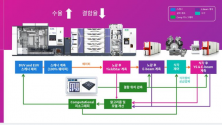Ships of the Russian Pacific Fleet and the Egyptian Navy conducted a joint exercise in the Mediterranean Sea. Previously, Russian ships, including the Varyag missile cruiser of Project 1164 and the frigate Marshal Shaposhnikov of Project 1155M, were previously considered
a large anti-submarine ship, left the port of Alexandria, where they were on a business call. The Egyptian Navy used the frigate Al-Qadeer.
The frigate "Al-Qadeer" F-909 was launched in 2022, the ship's displacement is 3,700 tons. During the exercises, the ships of Russia and Egypt practiced forming a detachment in a designated area and joint tactical maneuvering in various formations. In addition, the ships conducted communications training and provided flights of deck helicopters.
a large anti-submarine ship, left the port of Alexandria, where they were on a business call. The Egyptian Navy used the frigate Al-Qadeer.
The frigate "Al-Qadeer" F-909 was launched in 2022, the ship's displacement is 3,700 tons. During the exercises, the ships of Russia and Egypt practiced forming a detachment in a designated area and joint tactical maneuvering in various formations. In addition, the ships conducted communications training and provided flights of deck helicopters.

